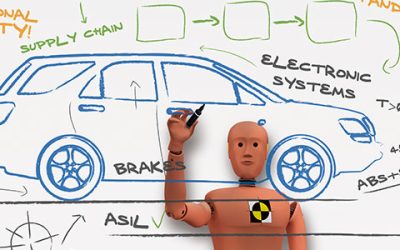ASPICE & V-Cycle

Ascertaining and organizing client requirements in accordance with codes and standards.
Organizing customer requirements into logical operations encapsulating hardware, software, and communication
The creation of software requirements to match the system requirements and the development of service units.
Simulation process of the model-based or software-based model unit testing based on requirements and basic standards.
The evaluation of software architecture and whether the service units are still in function.
Integration process of every services into the full system and testing for functionality and requirement achievement
Services

Autosar
AUTOSAR is a software architecture development process that is used for automotive ECUs to standardize safety requirements for three-layered software architecture: application, runtime environment (RTE), and basic software (BSW). AUTOSAR increases the quality, reliability, scalability, and maintainability of the system, software, and communication services on the vehicle in the development process between partners.

Functional Safety
Functional safety has been standardized as ISO-26262 for safety and functional parts in the integration, verification, and validation process of the embedded automotive software development. This standardization is used to achieve safety goals and safety requirements of the product to prevent system malfunction from predictable errors, problems, and hazards by risk analysis. The software components and units are classified into 5 main levels of risk Quality Managed (QM) and Automotive Safety Integrity Level (ASIL A to D).

Software Validation & Verification
The software validation and verification activities have a critical and inevitable role in the automotive software development life cycle in terms of cost and quality aspects for OEMs. NISO offers complete software V&V processes for all automotive applications.

Advanced Driver-Assistance System - ADAS
ADAS is designed to remove the human error component when operating vehicles of many types. ADAS plays an important role in avoiding possible accidents, minimizing driver errors, and as a pre-warning in situations that require sudden reflexes while driving. ADAS use advanced technologies to assist the driver during driving, and thereby improve drivers’ control of the vehicle
